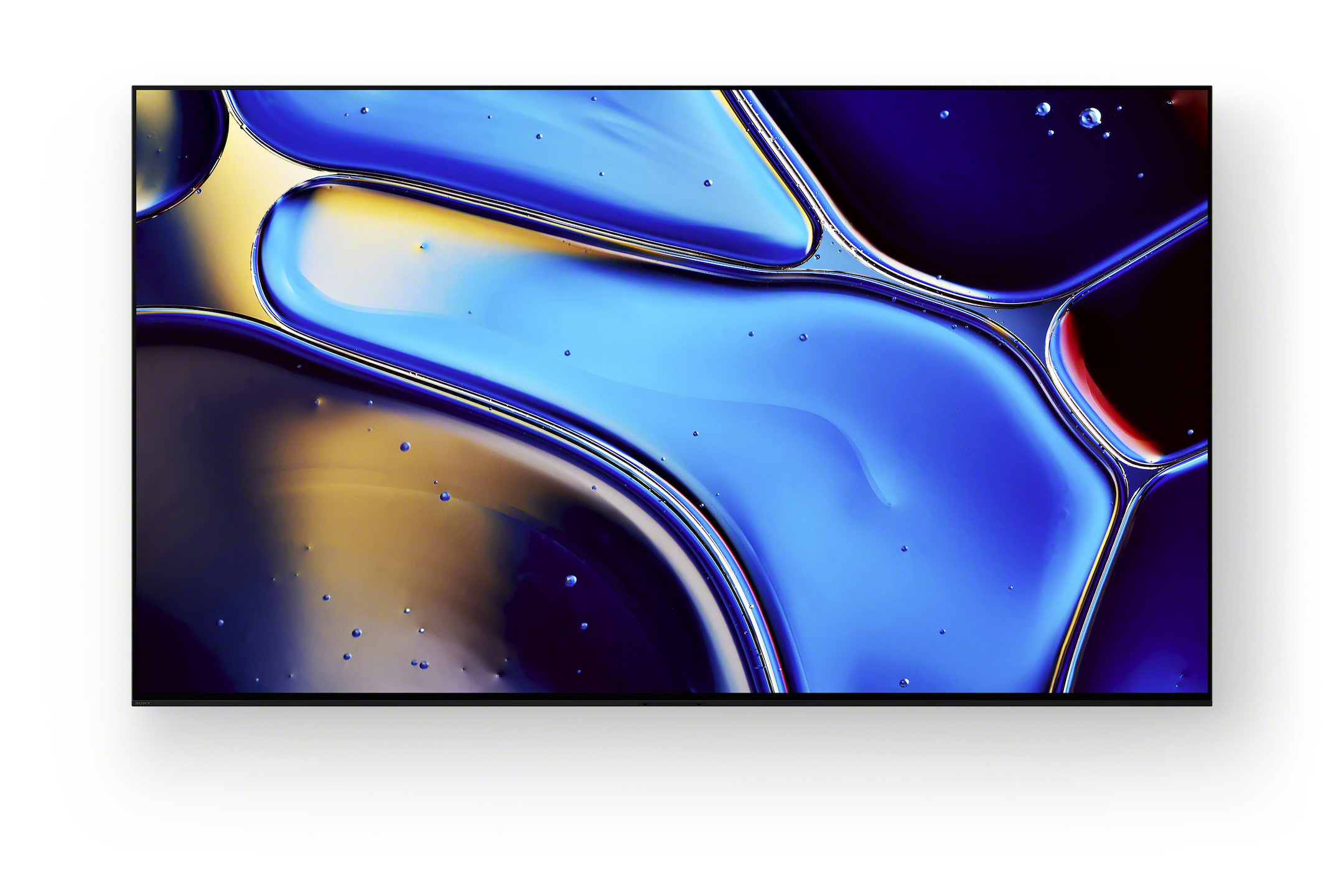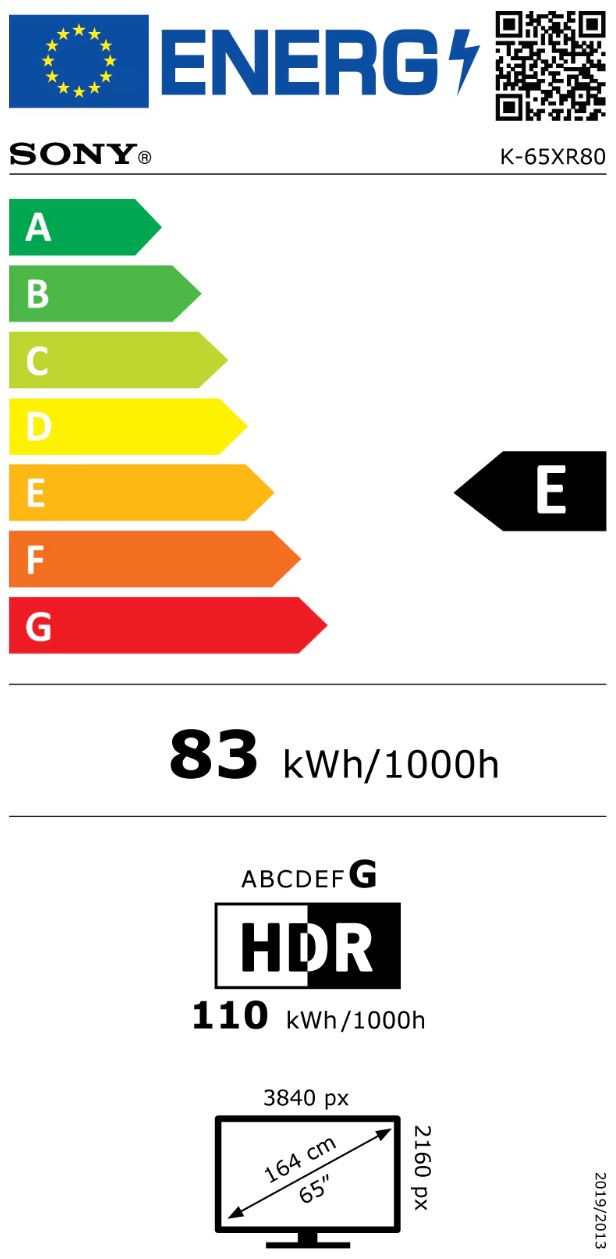







































£2,384.89*
- Resolution 3840 x 2160 4K UHD
- Max. Brightness 500 cd/m²
- Panel type OLED
- Contrast Ratio 5,000 :1



Product information
OLED technology: beautiful brightness and pure blacks
A truly stunning picture. Sony has harnessed the impenetrable blacks and stunning detail of OLED technology for crisp textures and realistic images - all in a sleek and stylish design that blends into any environment. Acoustic Surface Audio+ technology delivers cinema-quality sound directly from the screen, ensuring that the sound is perfectly matched to the picture. The intuitive Google TV platform gives you access to an almost endless library of apps and resources.
Every scene gains clarity thanks to excellent colour reproduction and contrast
More colour and contrast in brighter areas. Thanks to its high-luminance panel (1) and temperature sensor (2), this TV with XR Contrast Booster technology precisely controls the light for a clear picture and clean blacks.
Unrivalled realism thanks to XR Processor
Performance with precision in mind. XR Processor features a scene recognition system that detects and analyses data with impeccable accuracy and then optimises the image for the highest realism.
More than a billion vivid, realistic colours
See the colours of the world and capture the energy of real life. XR Triluminos Pro™ technology captures the subtle differences in saturation and tonality of over a billion colours, so you can see all the natural hues down to the smallest detail.
Crystal-clear picture where even fast movements remain smooth, bright and clear
XR Clear Image technology uses a custom database to intelligently convert your favourite content to near 4K resolution. XR Clear Image minimises noise through zoning and dynamic image analysis.
XR Motion Clarity™ technology analyses motion across multiple frames and precisely synchronises the backlight with movement on the screen, so images remain bright and clear regardless of the speed of the action.
Sound of the highest cinematic quality.
Feel like you're in a movie theatre. The Acoustic Multi-Audio+™ system with a beam tweeter on the top and frame tweeters on the sides delivers cinema-quality surround sound. Every sound comes from the right place.
The intelligent processing scales ordinary stereo sound to extraordinary 3D surround sound. Immerse yourself.
3D surround upscaling system creates virtual surround sound that comes from above and from the sides, using only the TV's speakers. Even 2-channel and 5.1-channel sound can be scaled to an impressive 5.1.2. In addition, Dolby Atmos® and DTS:X support ensures unforgettable surround sound.
Entertainment you love. With the help of Google.
The Google TV™ service delivers movies, series and other content from your apps and subscriptions and organises them specifically for you.
More than 400,000 movies and TV episodes from a variety of streaming services, all in one place, grouped by theme and genre, so every user can find something they like.
A great home cinema experience. IMAX Enhanced, Dolby Vision® and Dolby Atmos®.
Watch the most unforgettable films in the comfort of your own home. The TV supports the rigorous standards of IMAX® Enhanced, DTS:X®, Dolby Vision® and Dolby Atmos® for a great atmosphere and an impressive visual experience.
Technical data
| Name | Sony FWD-65XR80, 65", Display |
|---|---|
| Article number | 1000032097 |
| GTIN/EAN | 5013493474659 |
| Manufacturer SKU | FWD-65XR80 |
| EPREL ID | 1815114 |
| Model name | FWD-65XR80 |
| Brand | Sony |
| Product Type | Non-Touch Display |
| Product Series | Sony XR80 Series |
| Technology | LCD |
| Panel type | OLED |
| backlight | LED |
| Resolution | 3840 x 2160 4K UHD |
| Diagonal | 65" |
| Aspect Ratio | 16:9 |
| Viewing angle - Horizontal | 178° |
| Viewing angle - Vertical | 178° |
| Contrast Ratio | 5,000 :1 |
| Screen finish | Matt |
| Max. Brightness | 500 cd/m² |
| run-time | 8/7 |
| Response time | 8ms |
| Refresh Rate | 120Hz |
| Support - VESA | 300 x 300 |
| RAM | 32 GB |
| Inputs | 1x Ethernet , 2x USB-A , 4x HDMI |
| Outputs | 1x 3,5mm Jack |
| wireless technology | WiFi |
| Features | DTS HD Master , Dolby Atmos , HDR , HLG , Integrated speaker |
| Product width | 144.2 cm |
| Product height | 8.9 cm |
| Product depth | 3.7 cm |
| Weight | 22.3 kg |
| Colour | Black |
| EEK Spectrum | A to G |
| Energy efficency class | E |
| Delivery contents | Batteries , Power cable , Remote control , USB-C Cable |
| Condition | New |
| Warranty | 36 Month |
| Warranty type | Onsite Repair Service and support information |
Downloads
Product safety
| Person responsible for the EU |
|---|
| Sony Europe B.V. |
| Kemperplatz 1 |
| 10785 Berlin |
| Germany |
| info@sony.de |



